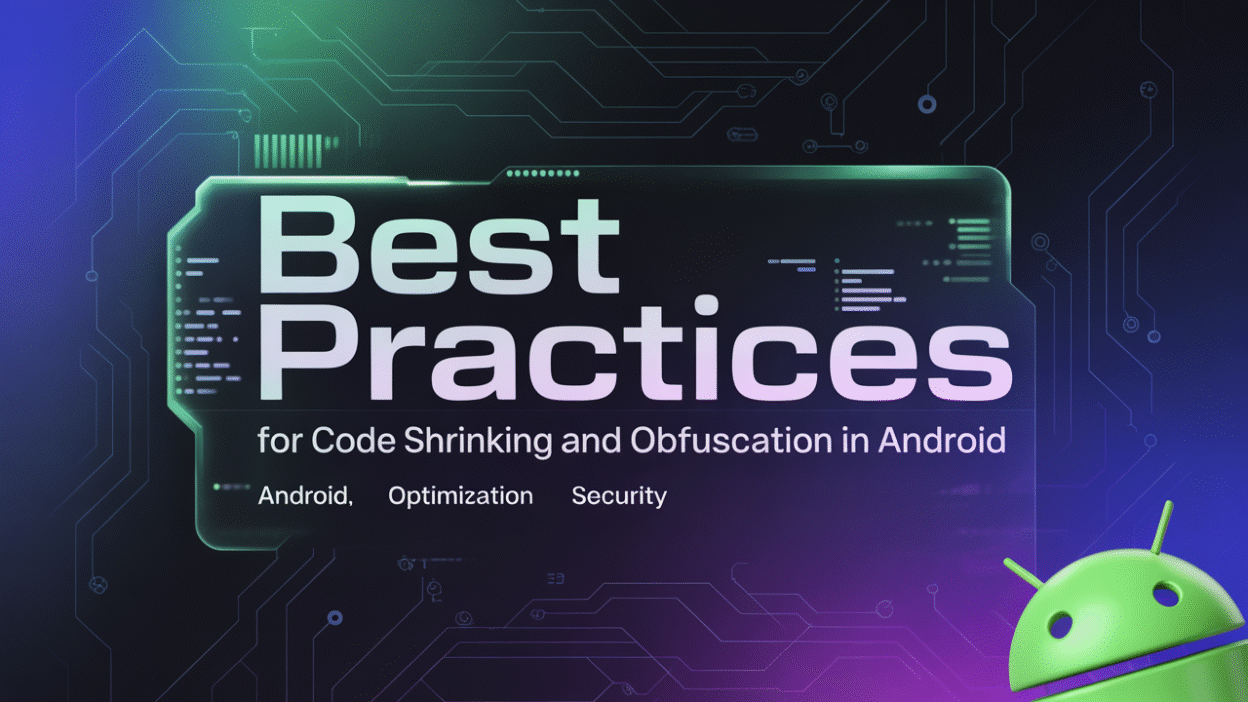In the world of Android development, optimizing app performance while ensuring security is a top priority. Code shrinking and obfuscation are two powerful techniques that help developers achieve these goals. By reducing the size of an application and obscuring its internal logic, developers can enhance user experience and protect their intellectual property.
Understanding Code Shrinking
Code shrinking involves removing unused code from your application during the build process. This not only reduces the APK size but also improves loading times and overall efficiency. Tools like ProGuard and R8 are commonly used for this purpose. For instance, adopting ProGuard allows you to shrink and obfuscate your app’s code effectively, potentially reducing the app size by up to 30% . Similarly, R8 offers advanced features for generating smaller APKs by eliminating redundant code or refactoring existing structures, resulting in a more compact footprint .
The Role of Obfuscation
Obfuscation complements code shrinking by renaming classes, methods, and variables with meaningless names, making reverse engineering significantly harder. This technique does not alter the functionality of the code; instead, it scrambles identifiers without changing execution order . Using tools such as ProGuard helps streamline this process, providing additional layers of protection against decompilation attempts . Furthermore, effective identifier minification through obfuscation shortens class and member names within the codebase, enhancing both security and readability .
Best Practices for Effective Implementation
To maximize benefits from code shrinking and obfuscation, consider following best practices:
Enable ProGuard or R8
Ensure that either ProGuard or R8 is enabled in your project settings. Both tools offer robust capabilities for minimizing code bloat and securing sensitive information. Developers have found success using ProGuard over several years due to its proven track record in efficiently managing code optimization tasks .
Customize Configuration Files
Tailor configuration files according to specific needs. These configurations dictate what parts of the code should be preserved (e.g., public APIs) versus those eligible for removal or renaming. Detailed guides exist on how to customize ProGuard rules effectively, allowing precise control over which elements remain untouched .
Monitor Build Outputs
Regularly inspect generated outputs post-build to verify correctness after applying optimizations. While automated processes handle most aspects well, manual checks ensure critical functionalities aren’t compromised inadvertently. Monitoring outcomes ensures streamlined results align with intended objectives .
Test Thoroughly
Before deploying optimized apps publicly, conduct comprehensive testing across various devices and scenarios. Verification confirms stability despite modifications introduced via shrinking and obfuscation steps. Practical strategies emphasize thorough validation phases pre-release to avoid runtime issues stemming from aggressive optimizations .
By integrating these practices into your workflow, you’ll likely see improved performance metrics alongside heightened security levels—making your Android applications leaner yet resilient against potential threats. Remember, every bit counts when striving towards delivering high-quality software experiences!
